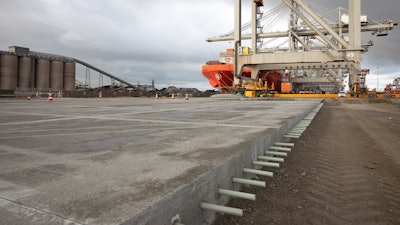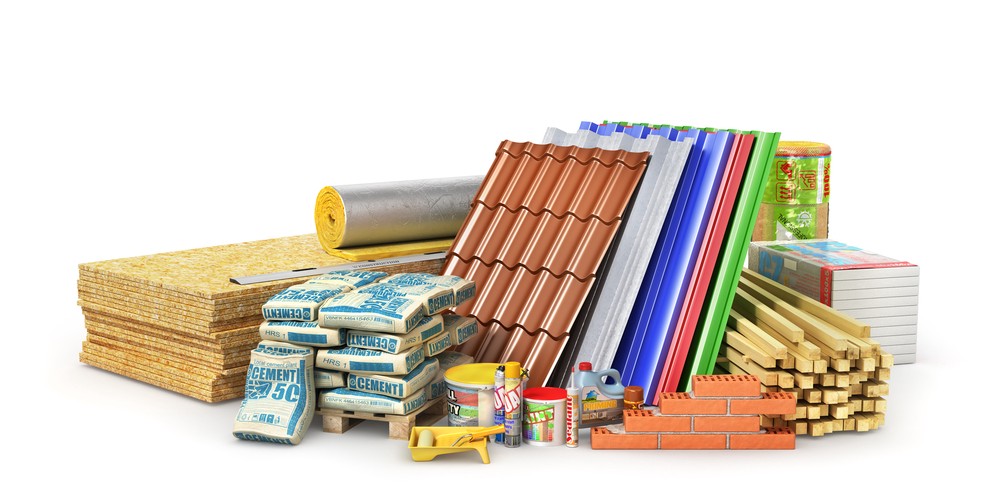Exactly How Composites are Changing the Landscape of Building And Construction Materials
Unlocking the Ecological Benefits of Recycled Compounds in Construction and Style
In the world of building and style, the utilization of recycled compounds holds significant assurance for boosting sustainability techniques and decreasing ecological influence. The shift towards a more lasting future in these industries pivots on opening the complete potential of recycled compounds.

Environmental Impact Decrease
The decrease of environmental influence via making use of recycled composites in building and layout plays a crucial function in lasting techniques. By integrating recycled compounds into structure products, the construction sector can significantly decrease its carbon impact and contribute to a much more green future. These lasting materials, made from repurposed plastics, timber fibers, or various other recycled aspects, offer a viable option to conventional building materials without endangering on quality or durability.
Recycled composites aid divert waste from landfills and reduce the demand for drawing out resources, thus preserving natural deposits. Additionally, the manufacturing process of these composites commonly consumes much less power and gives off less greenhouse gases contrasted to generating virgin products (composites). This change towards making use of recycled compounds not only decreases environmental harm yet additionally advertises a round economic climate by urging the reuse of materials that would certainly otherwise be thrown out
Waste Reduction
With a concentrate on reducing waste in building and construction and style, the assimilation of recycled composites offers a sustainable service to reduce ecological effect. Waste minimization is an important element of sustainable methods, and making use of recycled composites presents a possibility to accomplish this goal effectively. By using products that have actually currently offered their preliminary function, such as recycled plastics or redeemed wood fibers, the construction and design sectors can dramatically lower the amount of waste generated and sent out to garbage dumps.
Recycled composites have the possible to divert significant quantities of waste from standard disposal methods, adding to an extra circular economic climate where resources are utilized successfully. Additionally, the production process of recycled compounds commonly eats much less energy and creates less emissions contrasted to virgin products, better decreasing the ecological impact of building and construction and design projects.
Executing waste minimization techniques through the consolidation of recycled composites not only assists in saving natural resources but additionally promotes a more lasting strategy to structure and making for a greener future.
Power Preservation
Integrating recycled compounds not only decreases waste in construction and design yet additionally plays a crucial duty in enhancing energy preservation techniques within the market. The usage of recycled composites in building can significantly add to energy preservation through various ways. Firstly, the manufacturing of virgin materials generally calls for considerable power inputs, whereas using recycled compounds consumes much less power, consequently minimizing total energy consumption. In addition, integrating recycled compounds can add to better insulation properties in buildings, decreasing the demand for excessive heating or air conditioning, and subsequently lowering power usage for environment control. In addition, the light-weight nature of numerous recycled compounds can lead to lighter structures, requiring less energy for transportation and installation. By advertising using recycled composites in building and construction and design, the industry can make considerable strides in the direction of accomplishing energy performance and reducing its carbon impact, ultimately adding to a much more lasting built environment.
Carbon Footprint Reduction
Enhancing sustainability techniques through the application of recycled composites in building and construction and design dramatically lowers the carbon impact of the market. By integrating recycled products into the production of composites, the requirement for virgin sources reduces, leading to lower energy intake and greenhouse gas discharges linked with conventional manufacturing processes. This reduction in carbon footprint is vital in combating climate modification and advertising a much more environmentally friendly strategy to building and design.
The carbon impact decrease achieved with the adoption of recycled composites straightens with the international push in the direction of sustainable practices and the reduction of commercial discharges. Inevitably, by prioritizing the assimilation of recycled compounds, the sector can make substantial strides in lowering its carbon footprint and adding to a much more lasting future.
Lasting Future
The integration of recycled composites in building and construction and layout not only addresses immediate ecological worries yet also lays a strong foundation for a sustainable future in the sector. By integrating recycled composites into structure materials and items, the building and design markets can substantially lower their reliance on virgin resources, causing a much more circular economic situation. This shift towards sustainability is crucial for minimizing the environmental impact of conventional building and construction practices, which typically lead to high degrees of waste generation and source deficiency.

Verdict
Finally, recycled composites provide considerable environmental advantages in construction and design by lowering ecological influence, reducing waste, saving power, lowering carbon impact, and advertising a lasting future. Accepting making use of recycled compounds can contribute to a more environmentally-friendly approach to building and style, ultimately bring about a more sustainable and greener future for all.
The decrease of environmental influence through the use of recycled composites in building and construction and style plays a critical function in sustainable methods.With a focus on lessening waste in building and design, the assimilation of recycled compounds uses a lasting service to reduce environmental effect. By advertising the usage of recycled composites in construction and design, the market can make significant strides towards achieving power performance and reducing its carbon impact, ultimately adding to a much more lasting built environment.
